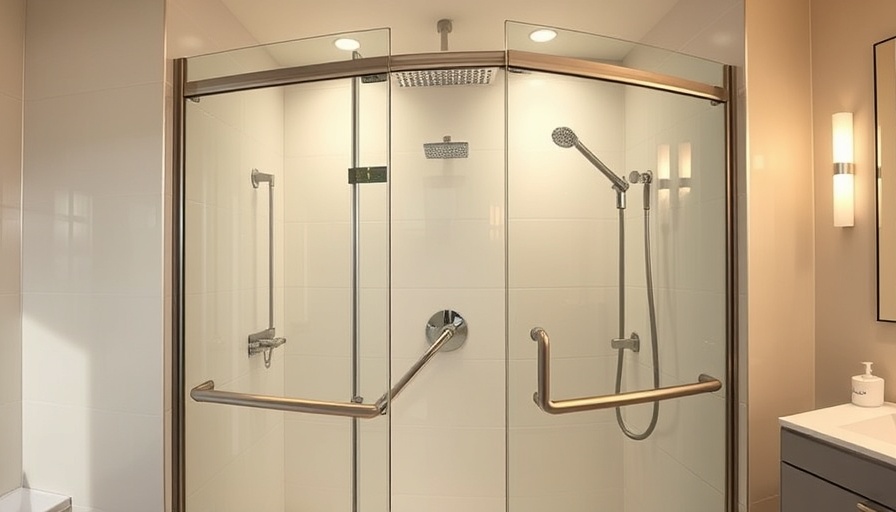
Why Walk-In Showers Are Essential for Elderly Safety
As we age, maintaining independence often begins at home, specifically in the bathroom where safety is often a concern. For elderly residents in Toms River, a community with a notable aging population, incorporating walk-in showers into bathroom designs is more than just a trend—it's a vital safety solution. Slip-and-fall accidents remain one of the leading causes of injuries among seniors, making it imperative to rethink traditional bathroom setups.
Key Benefits of Walk-In Showers
Walk-in showers provide a variety of advantages for older adults. Firstly, they eliminate barriers that can hinder mobility, such as high bathtub walls. This accessibility helps minimize the risk of falls. Additionally, the open layout often associated with walk-in showers allows for easy navigation, even for seniors using mobility aids. Furthermore, walk-in showers can enhance personal hygiene routines, encouraging seniors to bathe regularly without fear of injury.
Essential Features to Consider
When designing an elderly-friendly bathroom, several features should not be overlooked. Non-slip flooring is crucial; options like textured tiles can greatly reduce slipping risks. Moreover, integrating grab bars in strategic locations enhances stability. These should be installed at the appropriate height and support weight adequately, combining style with functionality. Water temperature control systems are another key element—these devices prevent scalding and ensure a comfortable bathing experience.
Thoughtful Design and Layout Considerations
A well-planned layout is fundamental in crafting an accommodating bathroom for seniors. Key aspects include an open design that facilitates movement without physical barriers and ground-level installations to avoid potential falls associated with stairs. Including a shower bench can also enhance safety; whether foldable or stationary, it provides a comfortable seating option for seniors, reducing the risk of accidents while showering.
Illumination: The Role of Lighting in Safety
Effective lighting is often an overlooked factor in bathroom safety. Well-placed lights can eliminate shadows that obscure hazards, offering a clearer visual pathway for seniors. Consider installing adjustable or motion-sensor lights that activate as one enters the bathroom. This thoughtful approach ensures that seniors are aware of their surroundings, contributing to overall safety.
The Social Value of Safe Bathrooms
Beyond individual safety, creating elderly-friendly bathrooms reflects a community's commitment to its older population’s well-being. Enhanced bathrooms serve as a symbol of respect and care, allowing older adults to maintain their dignity and independence. Furthermore, these modifications can foster social connections, as friends and family feel more comfortable visiting homes that prioritize safety.
Plans for the Future: Keeping Up with Aging Populations
Looking ahead, the need for elderly-friendly renovations will continue to rise as more seniors wish to age in place. Local builders and remodelers can play a pivotal role in addressing these needs by providing tailored solutions. Fostering awareness of the importance of accessible bathroom designs not only impacts individual safety but also helps strengthen the community as a whole.
Take Action: Design for Safety
Investing in elderly-friendly bathrooms is an investment in the future of our loved ones. Toms River residents are encouraged to assess their bathrooms and consider renovations to enhance safety and accessibility. Consistent small changes can lead to significant benefits for seniors, ensuring they lead healthy and independent lives.
 Add Row
Add Row  Add
Add 




 Add Row
Add Row  Add
Add 

Write A Comment